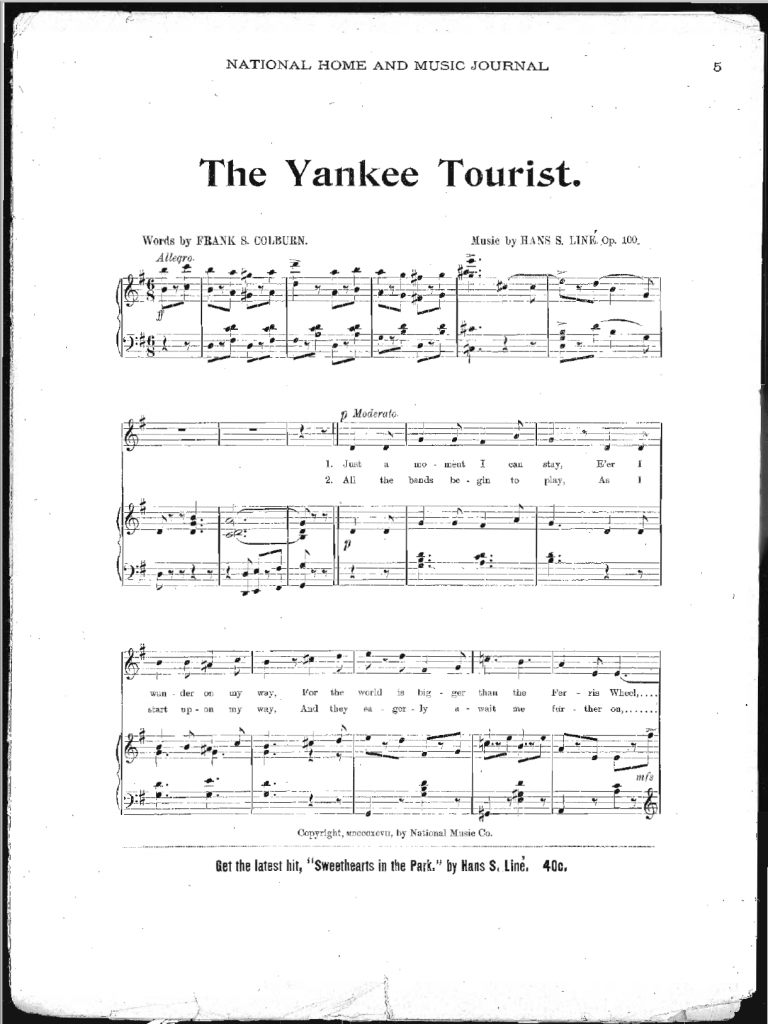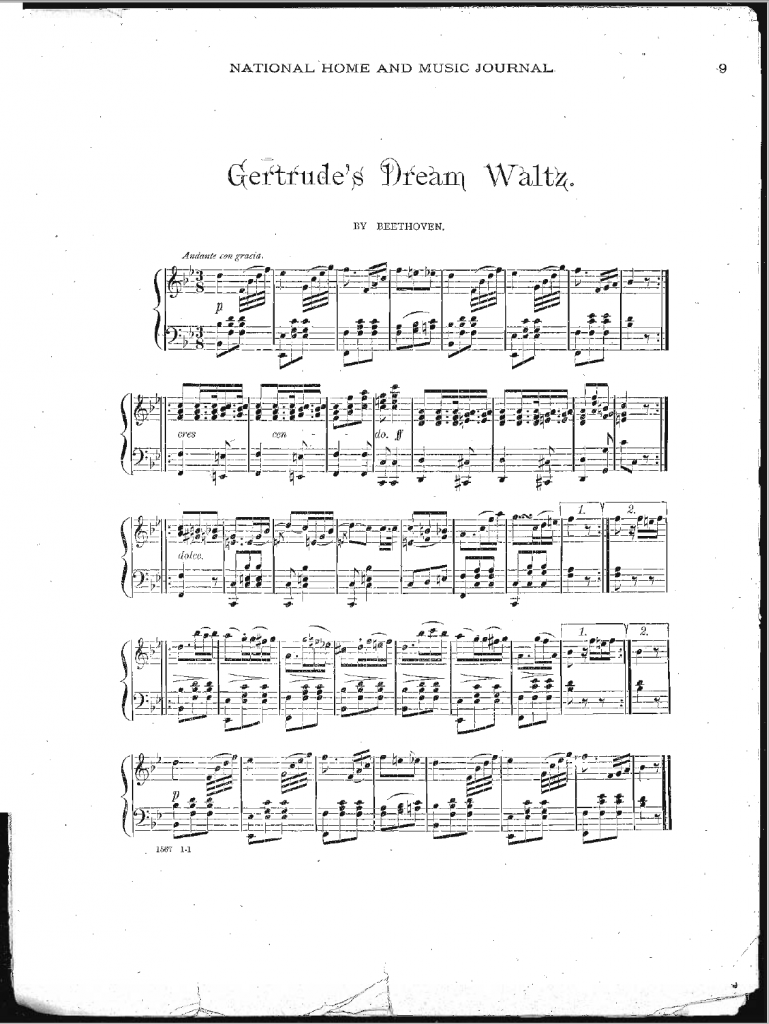In 1897, the Chicago Book and News Company published a volume of the National Home and Music Journal, a periodical that published music that was thought to embody elements of the national identity so well that they deemed it to be ‘Music for the Masses.’ From taking a look at the types of music they chose to include in these journals, we get an insider scoop into what was found to be “Americanness” in music.
The journal starts off exactly as we might expect, with The Yankee Tourist by H.S. Line and F.S Colburn. There aren’t any recordings available for this song, but one can imagine how it goes from the title. It follows a quarter note-eighth note pattern in 6/8 time, giving the piece a natural lilt.
The publisher then throws something interesting into this collection of ‘Music for the Masses’… a Beethoven piano piece. I hate to point out the obvious here, but Beethoven was not American. He was German. This inclusion shows that in 1897, a German piece of music was considered to be just as American as a piece like The Yankee Tourist.
Then, we are given a piece for mandolin and guitar—seemingly the “folk” piece of the collection. Also included are The Elk’s Two-Step, Treasure of My Heart, and Come Back to Your Mother, Madge (none of which have been recorded). Each piece selected by the editors was meant to highlight a specific aspect of “Americanness” as it stood in 1897. When I look at this collection, I see a journal that only equates the white, European-descendant’s experience with being “American.”
The question of what constitutes as “Americanness” has never gone away. The Washington Post recently published an article discussing what “real Americanness” looks like today. Their conclusion from analyzing a modern study is similar to my conclusion from analyzing a 200 year old publication:
“[‘Americanness’] is interwoven through our history and runs deep in our culture. Our hope is that these findings help us understand the particular ways these tensions are manifesting today, and thus the issues we need to confront to address our differences and remember the core values that can bind us together as Americans.”[1]
Primary Source: Colburn, Frank S, R J Hamilton, and Samuel I Osmund. National Home and Music Journal 5, no. 1, 1897. http://webfiles.wulib.wustl.edu/units/music/su pplcat/b10121535.pdf.
[1] Caleb Elfenbein, Peter Hanson. “Perspective | What Does It Mean to Be a ‘Real’ American?” The Washington Post. WP Company, January 3, 2019. https://www.washingtonpost.com/outlook/2019/01/03/what-does-it-mean-be-real-american/.


